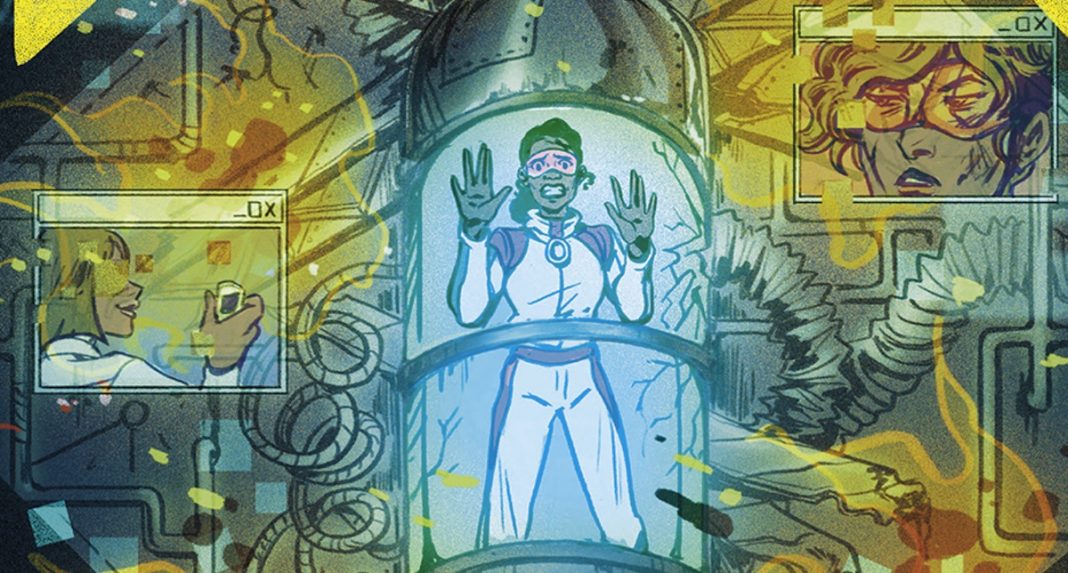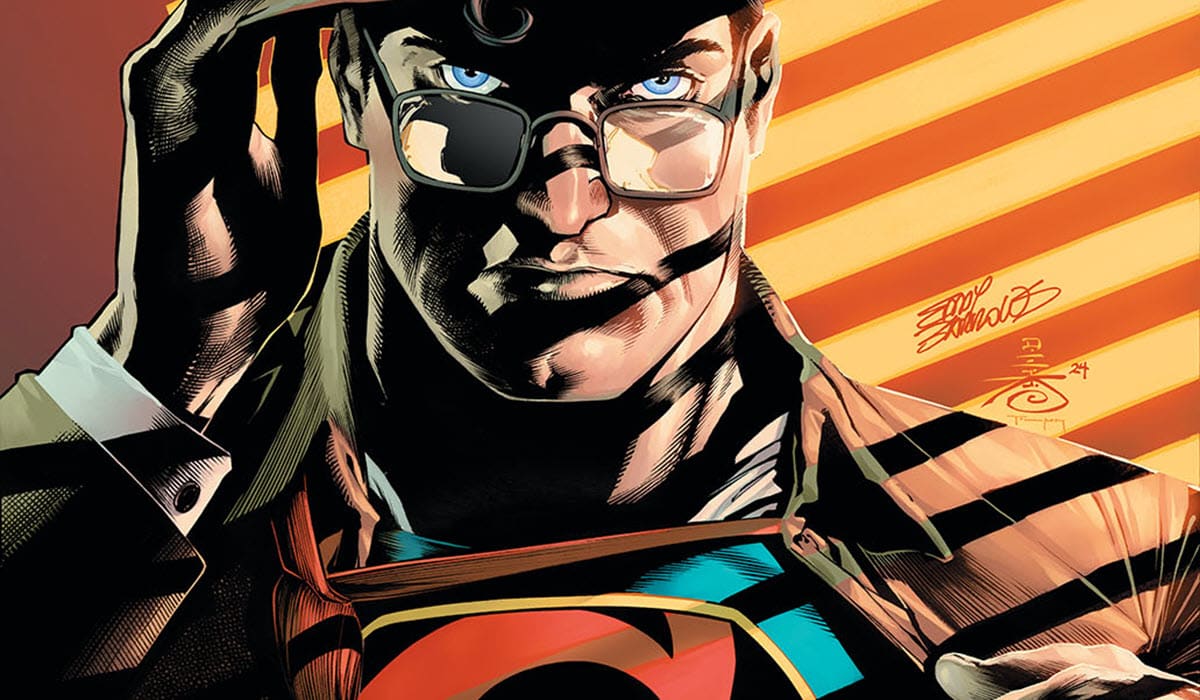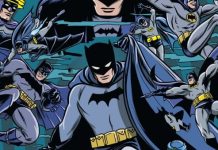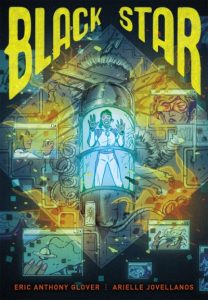
To find out everything we could about Black Star, which is published by Abrams ComicArts imprint MEGASCOPE and is available at your local bookstore or public library right now, The Beat caught up with Glover and Jovellanos over email. We asked about sci-fi inspirations, how writing a graphic novel compares with writing for Meow Wolf, and what went into developing the aesthetic of a strange new world!
AVERY KAPLAN: Can you tell us about the journey Black Star underwent to arrive at Megascope?
ERIC ANTHONY GLOVER: Black Star was feature-length screenplay at first, and I had posted some good news about its contest placements on social media. A writer friend of mine noticed and put me in touch the woman who would become the graphic novel’s editor, Charlotte Greenbaum. After Charlotte read the script, she made the case for me to turn it into a graphic novel with Abrams ComicArts, and thankfully, she was persuasive.
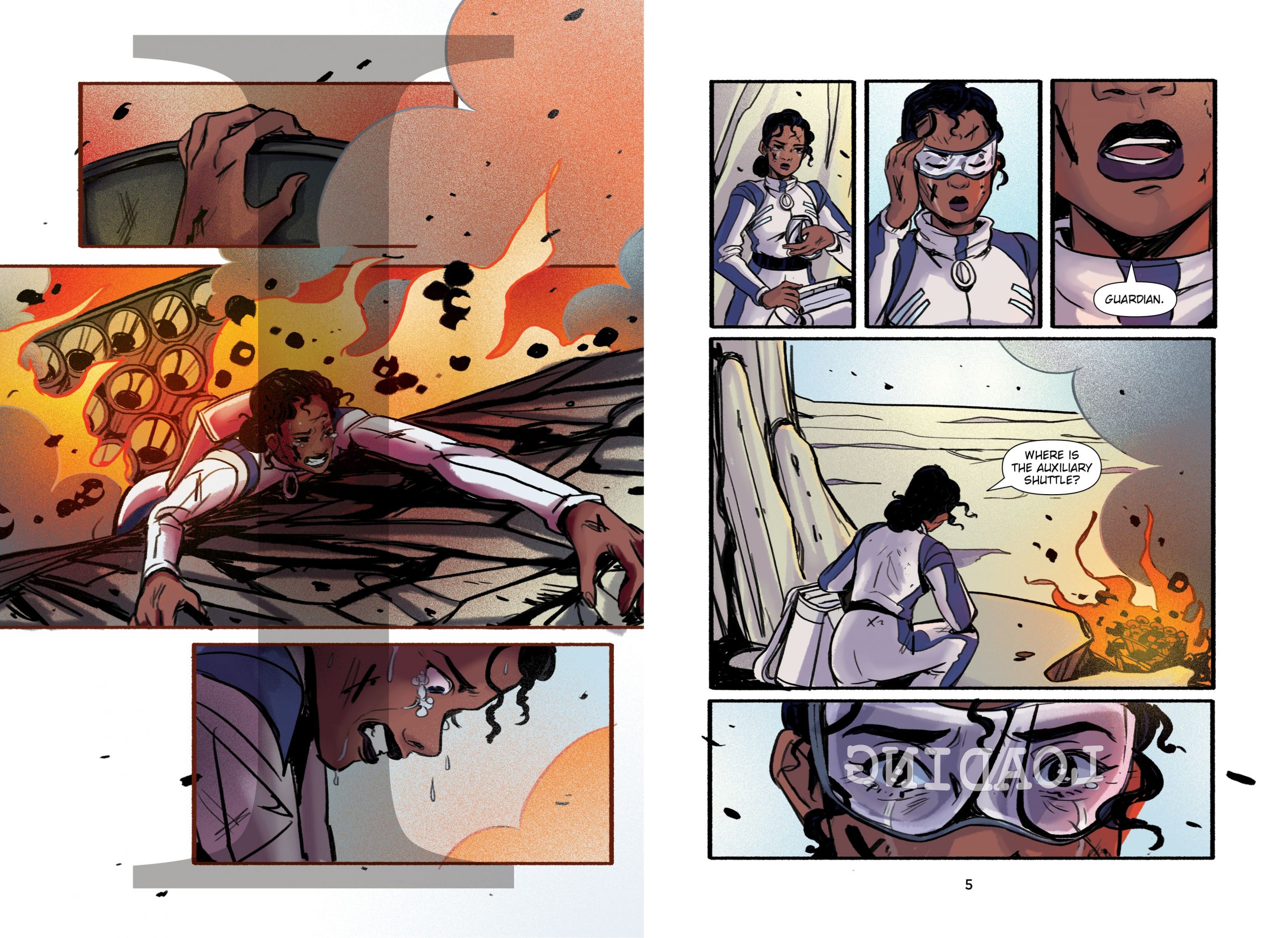
KAPLAN: While Black Star takes place in a fascinating world, much of the world building takes place through personal dialogue and visual clues. Can you tell us what went into telling a speculative fiction story in this manner?
GLOVER: The screenplay I’d written before Black Star was a booming, mammoth action movie with lots more exposition and battle sequences to serve its world building, which was fun, but felt like a little much in retrospect. For Black Star, I resolved to make the story a much more intimate affair. Two enemies. One simple objective. Deliberately quiet moments between action sequences. I’d say those goals were the same for writing the graphic novel, which was why the world building is on the leaner, more minimalistic side.
KAPLAN: Eric, your resume includes writing immersive experience scripts for Meow Wolf! Did this experience have an affect on Black Star? How is writing a script for an immersive experience different from writing a script for a screen or comics (if it is different)?
GLOVER: Working for Meow Wolf actually didn’t affect the graphic novel, because it was based on a screenplay I had written before my time there. (In fact, the screenplay is what got me hired by Meow Wolf in the first place.) Writing for the book was much different than writing in an immersive story context for Meow wolf, because the latter demanded an incredible amount of collaboration and crowdsourced ideas. Meow Wolf was also generally interested in storytelling that elicited a sense of curiosity, while I used Black Star to evoke more dread.
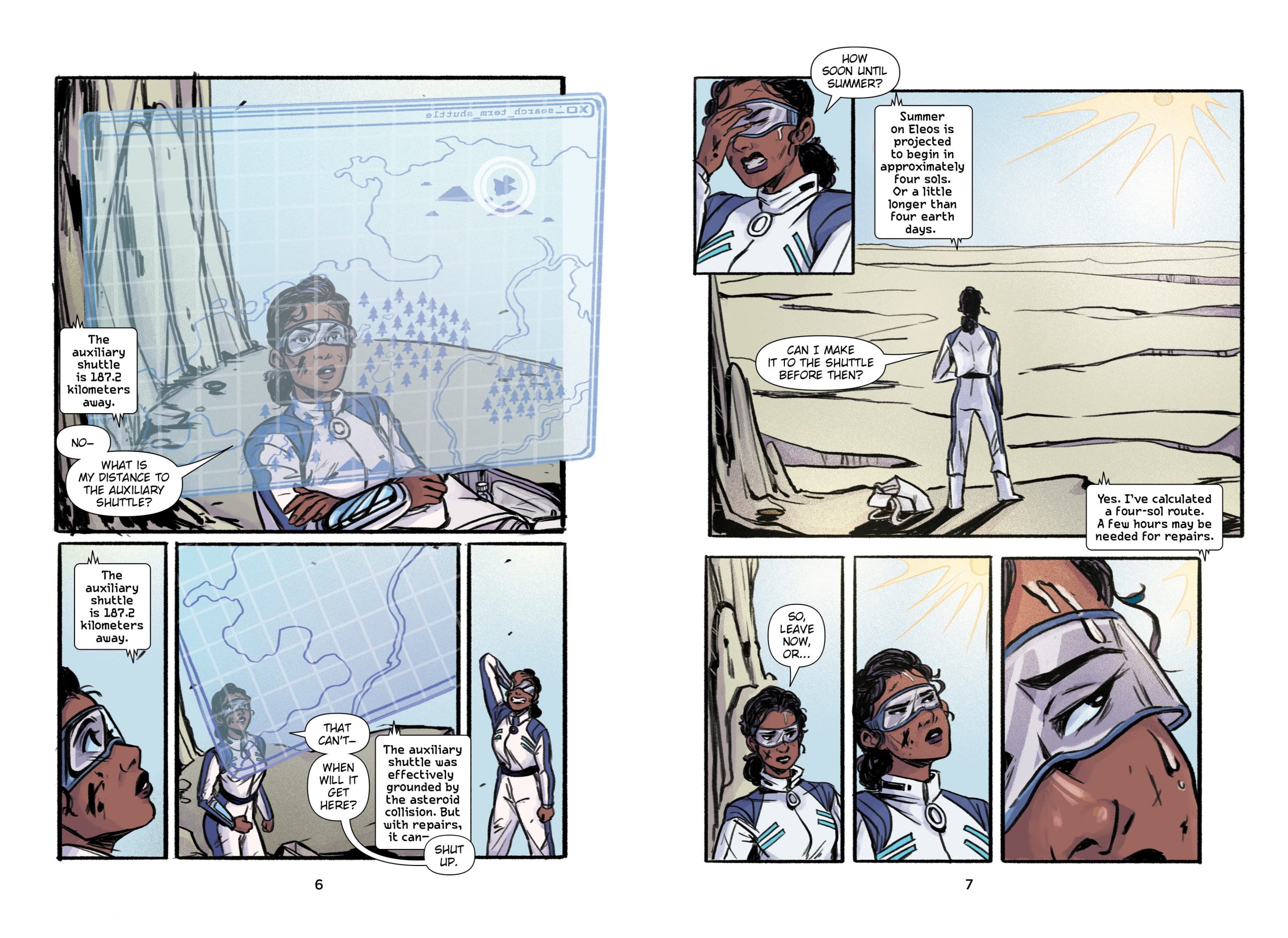
KAPLAN: Eric, early on in the story, we see some fascinating medical technology: a cauterizing agent! However, while effective, this treatment is shown to be extremely painful. Was it important for the technology in this story to be advanced but not too advanced, and if so, why?
GLOVER: That’s exactly right. We always seem to fall short of The Jetsons or Back to the Future II when we compare real-world advancements to the more optimistic imaginings of our progress. It just felt true-to-life to conjure a world in which scientific and technological improvements were apparent, but incremental.
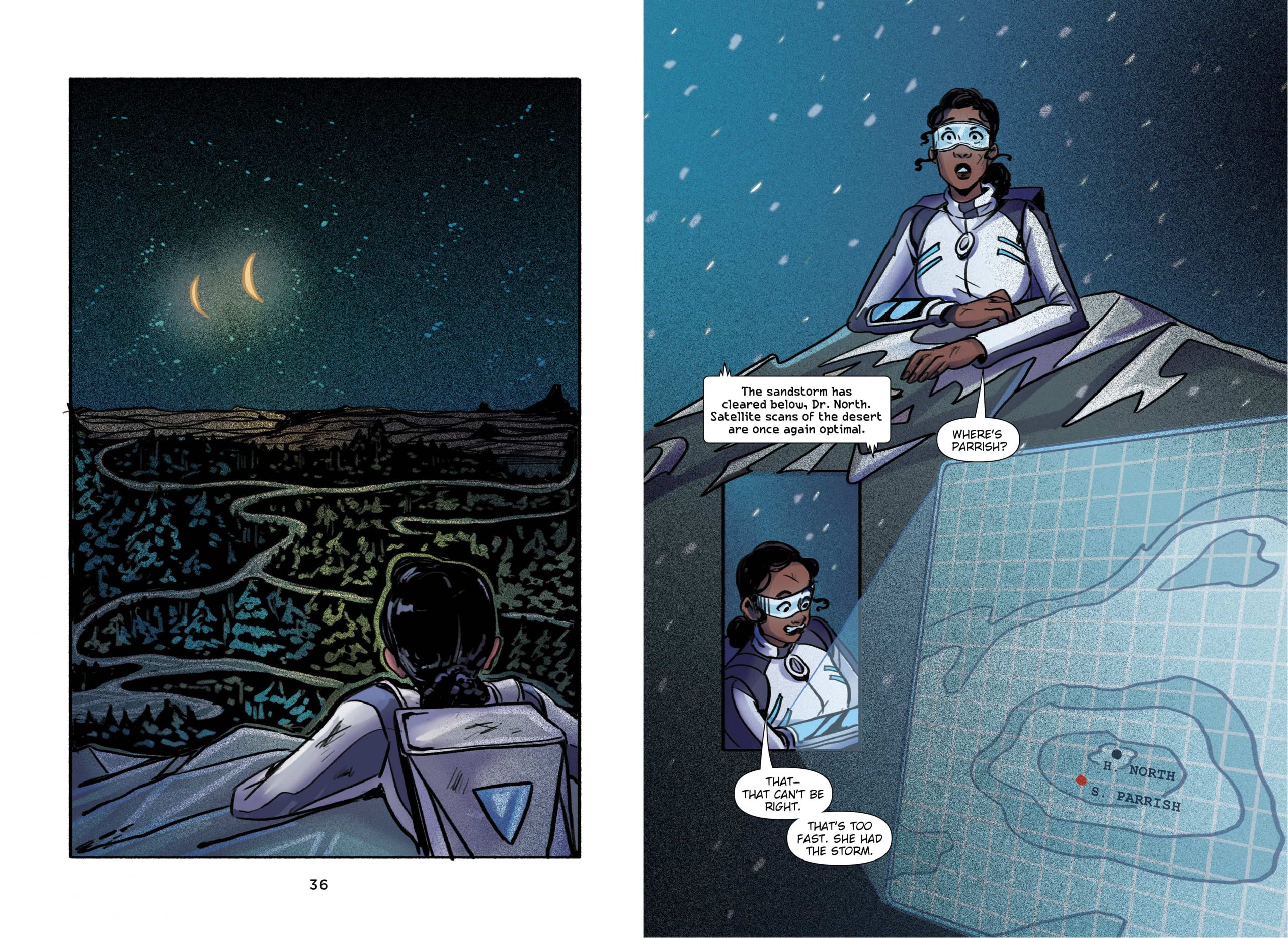
KAPLAN: Arielle, I see in the back material that you experimented with some different looks for Eleos before deciding on the aesthetic readers will see in the book. Can you tell us a little bit about the process of finding the right look for Eleos?
ARIELLE JOVELLANOS: For Eric, it was really important to keep the visual terrain fairly grounded and familiar so that the narrative focus stayed on the emotion and tension between the two main characters. When I do initial explorations for any type of worldbuilding, I think I tend to go big first and then pare down to what serves the story best, as well as what can reasonably be drawn multiple times for many pages at a time. For this being my first comic of this length, learning how to make designs that would be replicable across the whole book wound up being a more important thing than I realized — that was definitely an educational process for me.
While the terrain might feel Earth-like and familiar to the reader, I think the color actually wound up doing a lot of the heavy lifting on following the emotional cues of the characters. In that regard, I think the visual landscape of Eleos actually serves as a backdrop to reflect what’s going on with North or Parrish at any given moment.
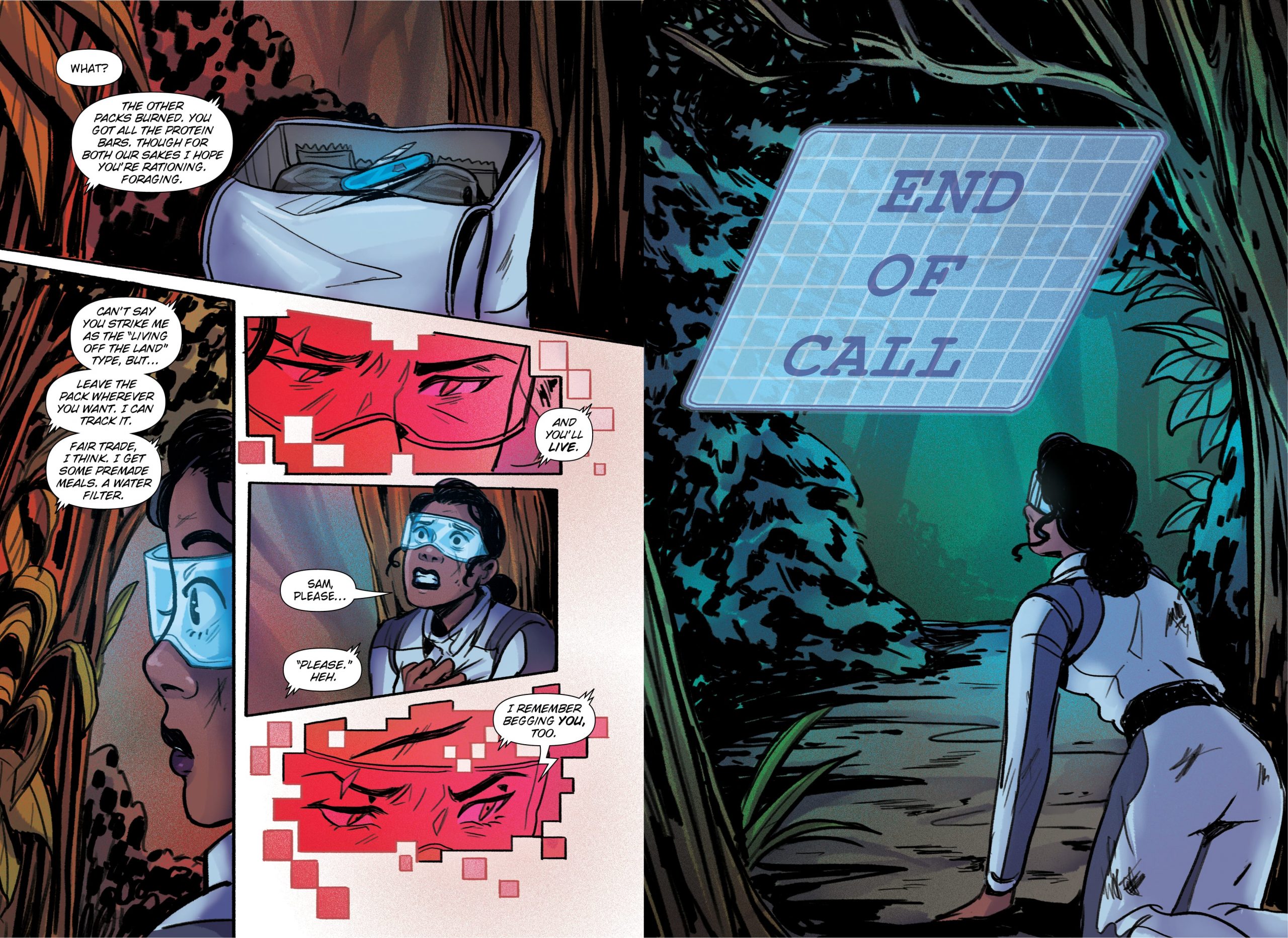
KAPLAN: Arielle, because so much of the narrative concerns North using her tablet, you had to find a distinctive way to effectively display the Guardian. Did you face any specific challenge in finding the (extremely effective) final version of the display?
JOVELLANOS: Finding the visual language for the Guardian actually came quite easily, probably because some part of me will always be nostalgic for the late 90s/early 2000s Microsoft interface designs. In our discussions, Eric had mentioned that the technology shouldn’t be too slick, so I thought calling back to the image of a bunch of computer windows would be appropriately futuristic yet still familiar to the reader. From there, it was a matter of finding ways to elevate and stretch that visual language to match the escalating twists and turns of the story; it was rather fun, actually!
KAPLAN: Was there any story (in comics or any other medium) that was especially inspirational to you in the creation of Black Star?
JOVELLANOS: My frame of reference for sci-fi comes more from anime than from western media, so those influences definitely seeped in there, both consciously and subconsciously. In the back matter of the book, I do talk about the plug suits from Neon Genesis Evangelion being the base inspiration for the space suits in Black Star — using color to demarcate each character and say something about each of their personalities was a great narrative trick from NGE that I adapted into the visual language of Black Star.
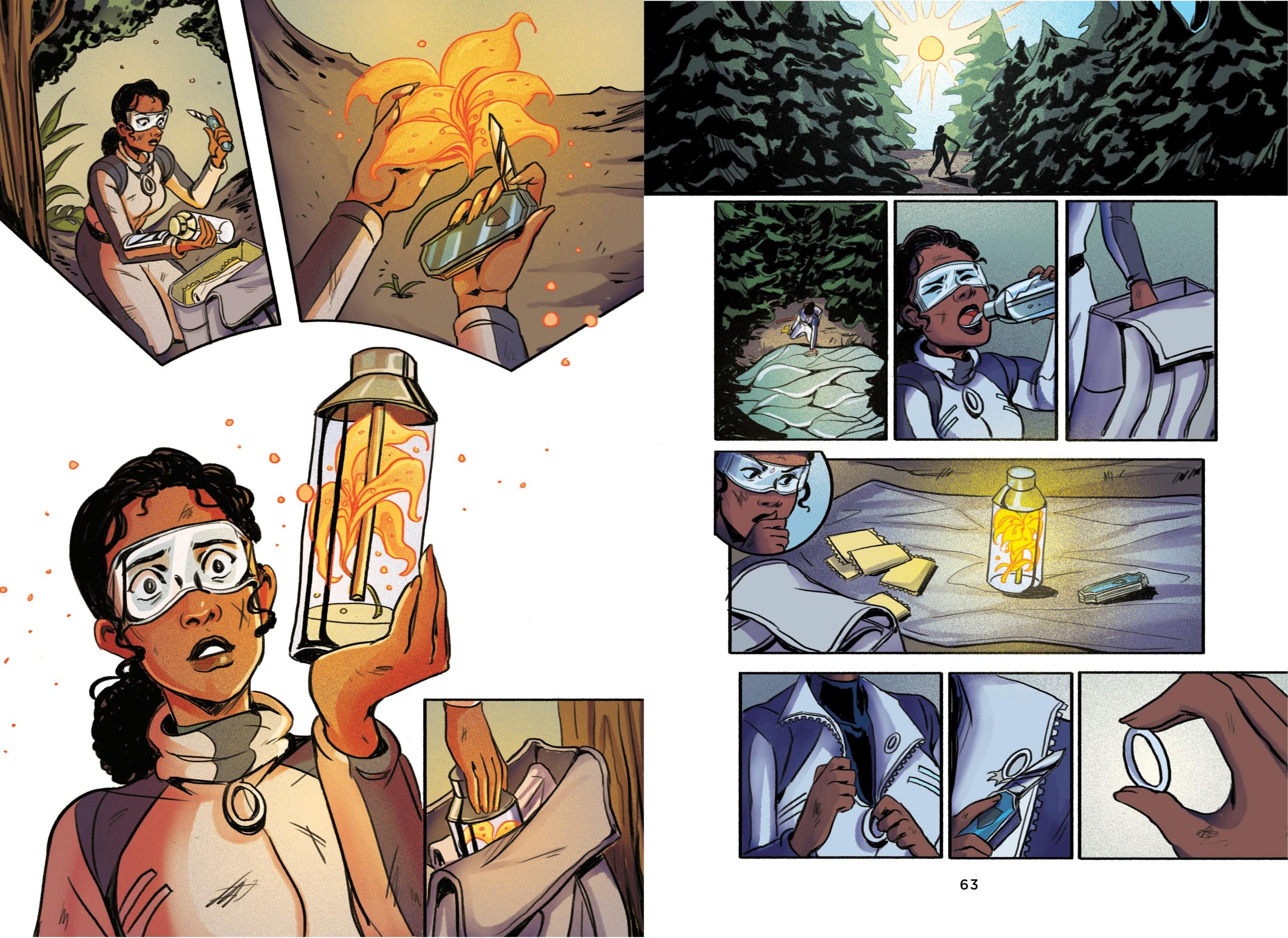
KAPLAN: Is there anything else that you’d like me to be sure and include?
GLOVER: I’m deeply grateful to Arielle, Charlotte, Megascope’s editor John Jennings, everyone at Abrams ComicArts, and all of the friends and family who have supported this book. I feel extremely luck to have had so much goodwill both from the publishing and personal sides of my life.
Black Star is available today at your local bookstore and public library.


